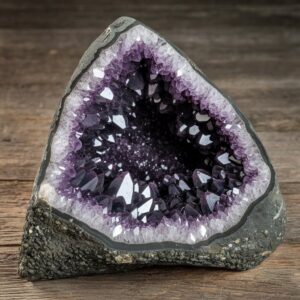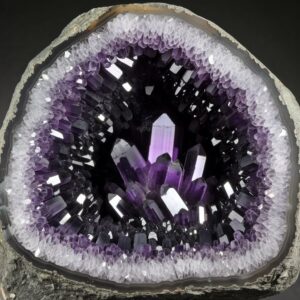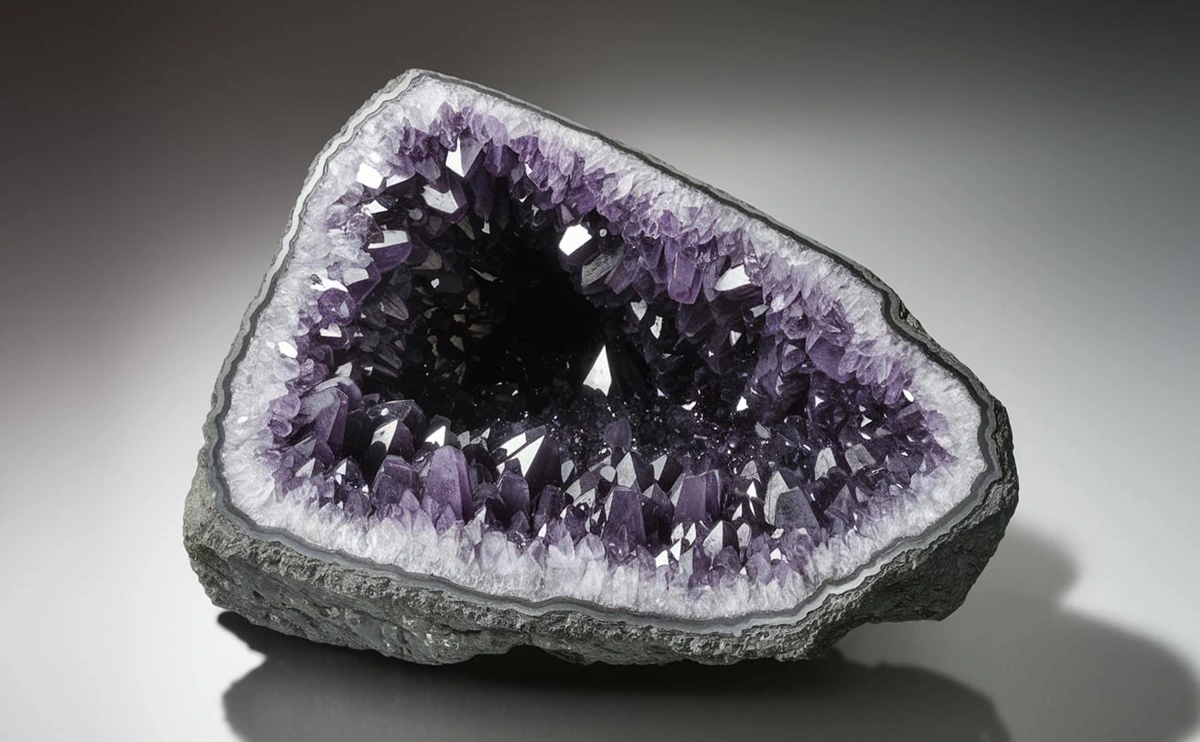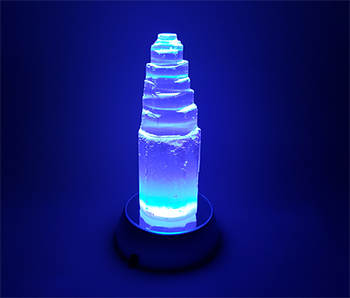Geode stones are nature’s hidden treasures, formed over millions of years within the earth. These rocks appear plain and unassuming on the outside, but crack them open, and you’ll uncover stunning crystals and mineral formations that spark awe. Whether you’re a geology enthusiast, a collector, or simply someone who appreciates unique natural wonders, geodes offer a fascinating glimpse into the earth’s processes.
Table of contents
What is a Geode Stone?
Geodes: An Essential Part of Earth’s Geology
Geodes and Their Formation Process
Where to Find Geodes
How to Identify a Geode
The Beauty of Geode Stones in Your Collection
How to Care for Your Geodes
Conclusion: A Treasure from the Earth
What is a Geode Stone?
A geode stone is a rock formation with a hollow cavity inside, often lined with crystals or mineral deposits. These crystals typically form when gas bubbles in volcanic rock or sedimentary layers are filled with mineral-rich solutions. Over time, these solutions crystallize to create the stunning geode formations we admire today. Common minerals found in geodes include quartz, amethyst, calcite, and even rarer varieties like celestite or fluorite.
While the outside of a geode stone may look rough and unremarkable, once cracked open, the interior reveals intricate and colorful crystal structures, making geodes a prized possession for collectors.
Geodes: An Essential Part of Earth’s Geology
Geodes have been part of Earth’s geological processes for millions of years. They form in a variety of rock types, but volcanic and sedimentary rocks are the most common hosts. The minerals that fill these cavities are influenced by the chemical composition of the water inside them, making each geode unique. Geodes are not only a beautiful display of nature’s artistry but also serve as an important part of understanding geological processes like mineral deposition and crystal growth.
Geodes and Their Formation Process
The formation of geodes is a fascinating geological process that occurs over thousands to millions of years. Here’s how they form:
- Initial Formation: Geodes begin their life as gas bubbles or voids in volcanic rock or sedimentary layers. These cavities are created by gases escaping during volcanic activity or from the decay of organic material.
- Filling with Mineral-Rich Water: Over time, groundwater rich in minerals seeps into these cavities. The minerals come from surrounding rock or soil, and the water’s evaporation helps concentrate them inside the geode.
- Crystal Growth: As the water evaporates and minerals settle, crystals start to form on the walls of the geode. The type of crystals depends on the minerals present in the water.
- Final Stages: After millions of years, the crystals grow large enough to fill the interior of the geode, creating the stunning formations we see today.

Where to Find Geodes
Finding geodes can be an exciting and rewarding activity. While they can be found in various locations around the world, certain regions are particularly known for their abundant geode deposits.
- United States: Geode hunting in the U.S. is a popular pastime, with locations such as Iowa, Arizona, Indiana, and California being some of the best-known geode hotspots. The Keokuk Geode Beds in Iowa are famous for producing high-quality specimens, while Arizona is known for its colorful quartz and amethyst geodes.
- Mexico: The Batopilas Mine in Mexico is renowned for producing large geodes, often filled with amethyst and other minerals. These geodes are prized by collectors for their size and color.
- Brazil: Brazil’s rich mineral deposits make it one of the best places to find stunning geodes, particularly those filled with citrine or amethyst.
- Europe: The Rhine Valley in Germany is home to beautiful calcite-filled geodes, while Spain has several regions known for their quartz and gypsum geodes.
- Chile: The Chilean Andes provide the perfect conditions for the formation of amethyst and other colorful geodes. Collectors flock to this area for its high-quality specimens.
How to Identify a Geode
Finding geodes requires a sharp eye and knowledge of the area you’re searching in. Here are some tips to help you spot a geode stone in the wild:
- Shape and Texture: Geodes typically have a round or oval shape and a rough, pitted exterior. The texture can often be compared to a weathered rock, so it’s important to look closely for the distinctive hollow shape.
- Weight: Geodes are usually heavier than they appear due to the mineral contents inside. They may feel solid, but a tap with a hammer or tool will often reveal a hollow interior.
- Cracking Open: Once you’ve found a geode, carefully cracking it open will reveal its crystalline interior. Make sure to wear safety glasses and gloves when attempting to open a geode, as the stones can be sharp.

The Beauty of Geode Stones in Your Collection
Geodes are not only fascinating geological specimens, but they are also prized for their aesthetic value. Whether you’re displaying them in your home or adding them to your rock collection, geode stones serve as beautiful natural art. Amethyst geodes, with their stunning purple crystals, are particularly popular, but other varieties like quartz, citrine, and calcite offer unique beauty.
How to Care for Your Geodes
To keep your geodes in excellent condition, follow these simple care tips:
- Avoid Direct Sunlight: Prolonged exposure to direct sunlight can cause geodes to fade over time. It’s best to display them in a shaded area.
- Regular Cleaning: Dust your geodes gently with a soft cloth to avoid scratching the surface. If they get particularly dirty, a mild soap solution can be used to clean them.
- Proper Display: Geodes can be heavy, so ensure that you place them on a stable surface. Display cases are ideal for showing off larger specimens.
Conclusion: A Treasure from the Earth
Geodes are truly one of nature’s hidden treasures. Their unassuming exteriors give no hint of the stunning crystal formations hidden inside. Whether you’re a seasoned collector or a casual enthusiast, the allure of geode stones and their geological significance are undeniable. Now that you know more about geodes, their formation process, and where to find them, it’s time to start your own collection or simply appreciate the natural beauty that geodes bring to the world.
If you’re interested in adding a geode stone to your collection, browse our wide selection of geodes for sale. From amethyst to quartz, our geodes are sourced from the best locations around the world, ensuring that you receive only the finest specimens.


